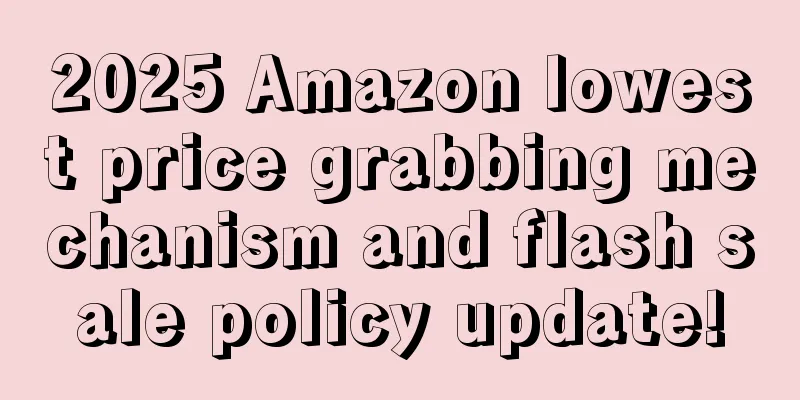Big scandal of fake orders? Amazon has the most fake reviews in history!

|
Primeday has just ended recently, and everyone has to start preparing for Black Friday and Cyber Monday in a month. Students who sold well on Prime Day should have seen some improvement in their rankings recently. If they can maintain a certain number of orders and rankings, it will have a great positive effect on Black Friday and Cyber Monday. In addition, there are many orders during the peak season, and more reviews can be posted while controlling the review rate to a certain level. Therefore, many sellers have recently begun to pile up reviews for their products to improve their rankings. However, you have to be careful with recent reviews, fake orders, ratings, and other methods. Reports on fake reviews on Amazon from various foreign media have begun to ferment, and even Fakesopt has intervened, saying that Amazon’s current fake reviews have reached a historical peak! Sellers should be familiar with Fakespot. When we do competitive product research, we often use this website to check the true situation of competitive product reviews. According to Fakespot, from the outbreak of the epidemic in the United States in March this year to October before Prime Day, Amazon added more than 720 million reviews in less than 7 months. Fakespot's algorithm shows that 42% of these new reviews may be fake reviews. In comparison, the proportion of fake reviews in the same period last year was only about 36%. In the data of Fakespot over the years, the proportion only rose to this level during the Black Friday peak season at the end of the year. We sellers can also guess this situation, because everyone wants to take advantage of the large order volume during the peak season and post more reviews. During the seven or eight months of the pandemic, Amazon maintained a very high rate of fake reviews, which is very abnormal. I did a simple analysis and found that although the number of our sellers did increase a lot during this period, it cannot be simply attributed to the expansion of the seller group and business. I looked for some other news and found that it is not only the sellers’ demand for fake reviews that is increasing, but also the supply side, that is, more and more people in the United States are taking fake reviews. In July and August, a new survey by the University of California sampled 20 fake review teams based on Facebook. Each team had an average of more than 16,000 members, and posted more than 560 fake reviews on various platforms every day , with Amazon being the hardest hit. Many of these fake order teams expanded their membership after the outbreak. I speculate that many of them are local people who lost their jobs or are unemployed due to the outbreak and need new sources of income. It is normal for them to choose to fake orders or reviews. In this way, both the demand and supply sides are increasing, and the proportion of fake reviews on the Amazon platform is of course high. At the same time, analysts also pointed out that there is another new feature of Amazon that is partly responsible for the surge in fake reviews, and that is One-tap Review. Rating is dangerous recently One-tap Review is a feature that allows buyers to leave reviews easily. Without leaving any content, buyers can leave a star-rated review for a product with just one click. In this way, neither the seller nor third-party websites such as fakespot can capture customer information, and thus cannot determine whether the review is fake. This feature was actually launched for testing as early as October last year, but it was not until February and March of this year that it began to be abused. We even wrote an article at the time to remind everyone to pay attention to hidden negative reviews. The founder of ReviewMeta, another third-party website that focuses on Amazon review authentication, also said in an interview that this type of rating makes it difficult for them to judge the authenticity of reviews. Since February of this year, a large number of ratings have flooded into the Amazon platform. Although it is difficult to judge, these ratings have raised the average score of many products from 4.3 to 4.6. We sellers all know what this increase means. Although it is only a few points higher, it is the difference between four stars and four and a half stars when displayed on the page. So these ratings are obviously intended to increase the average star rating. Precisely because ratings are easy and hidden to manipulate, especially because they grow rapidly before Prime Day, most of them will be judged as suspicious reviews, so major media have recently paid attention to the problem of fake reviews on Amazon. Well-known media including CNN and Bloomberg have all issued articles condemning the company. Friends who have read our previous reports should know that Amazon attaches great importance to media opinions, especially since it has been targeted by antitrust agencies recently. This kind of negative news must be dealt with as soon as possible. Amazon has not yet made a positive response, but the media also revealed an email from an Amazon spokesperson, saying that Amazon is aware of the risk of abuse of this system (One-tap Review) and is investing a lot of resources to ensure the integrity of reviews on the platform. It seems that ratings are likely to be rectified by the authorities in the near future, and it may be a major change to the entire system, which will block the risk of abuse to a certain extent. Sellers who are about to prepare for rankings for the Black Friday peak season must be more careful when using ratings. Preparation for the peak season should start from many aspects. Sellers who did not perform well on Prime Day this time should seize the opportunity of Black Friday and Cyber Monday at the end of the year! We are going to bring you a year-end class in Hangzhou next month. You only need to share the venue fee to participate! At that time, teachers Alice, Vivian and Frank will bring us the following three perspectives of preparation skills for the peak season. 1. How to use the advertising matrix to seize rankings during peak season ——Alice Qian 2. Deeply optimize keywords and lock the homepage in advance ——Vivian 3. Prepare for a rainy day and establish an account defense system during the peak season ——Frank |
<<: Sellers' sales growth in doubt? Amazon's own stores take away orders
>>: Amazon's new policy is about to be implemented! It concerns store safety!
Recommend
What is aCommerce? aCommerce Review
aCommerce, similar to Baozun in China, is an e-com...
What is MobiKwik? MobiKwik Review
MobiKwik is an independent mobile payment platform...
What is Jimiao Cloud? Jimiao Cloud Review
Jimiaoyun is a professional cross-border e-commerc...
Bank of America lists Amazon, China's JD.com, and Walmart as the preferred e-commerce platforms!
It is learned that according to foreign media repo...
Walmart and Symbotic LLC deepen cooperation! Reshape the traditional warehouse and grocery distribution chain!
<span data-shimo-docs="[[20,"获悉,沃尔玛和革命性的人工...
What is SellerCenter: Free Seller Analytics Tool? SellerCenter: Free Seller Analytics Tool Review
Amazon, AliExpress, Shopify and Wish four major pl...
What is KEYCEO? KEYCEO Review
KEYCEO is a high-tech enterprise engaged in comput...
Amazon sellers share their experience in clearing inventory
Clearance experience According to the priority, i...
What is Qiwi? Qiwi Review
Qiwi is one of the payment service providers in Ru...
Amazon officially responded to the ban on its massive sales account: zero tolerance for violations!
May can be described as a turbulent month for Amaz...
Is it better to report more quantity on Amazon flash sales?
There are many factors that affect the flash sale....
The most comprehensive analysis of the 2022 holiday sales season! Learn which categories are worth paying attention to in one article?
The 2022 holiday season is no longer out of stock,...
Costco's November revenue was dismal! E-commerce sales dropped 10.1%!
<span data-docs-delta="[[20,"获悉,近日,北美电商平台C...
What is Yifan Supply Chain? Yifan Supply Chain Review
Yifan Supply Chain is a national cross-border e-co...
What is Depop? Depop Review
Depop is a fashion + shopping platform where users...









